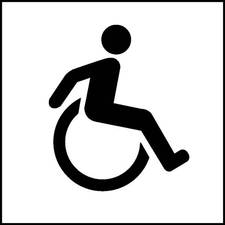Tips and Tricks for Slow Walkers and Wheelchair-Users
 Travel by its very nature requires a lot of planning and preparation, especially when it includes air travel. Factor a disability into that equation and the complexity increases. That doesn’t mean it’s impossible, but it does take more planning.
Travel by its very nature requires a lot of planning and preparation, especially when it includes air travel. Factor a disability into that equation and the complexity increases. That doesn’t mean it’s impossible, but it does take more planning.
With that in mind — whether you just need an airport wheelchair to get to the gate, or you are a fulltime scooter or wheelchair-user — guest blogger Candy Harrington, the author of several best-selling guide books for disabled travelers, shares her expert tips to help you along in the planning process.
• Educate yourself about the Air Carrier Access Act (ACAA), the US law that governs access on all flights to and from the US. Click here for the latest revisions of the ACAA.
• Choose US carriers for the best access, as some Asian, African and Caribbean carriers have been known to deny boarding to unaccompanied wheelchair-users. If you travel on a foreign carrier, learn the access laws of that country too.
• If you need a non-ticketed escort to accompany you to the gate, advise the airline of this when making your reservation. Your escort will be asked for photo identification and given a security checkpoint pass.
• Allow plenty of extra time to get through security, especially if you wear a prosthesis or use any type of assistive device. Slow walkers should request a wheelchair at check-in. Even if you can walk, it will cut down on the fatigue and standing time.
• If you can’t bend over or have problems with your balance, tell the TSA officer that you cannot remove your shoes because of your disability. You are not required to remove your shoes if your disability prevents you from doing so, but you will be hand-wanded.
• If you can’t walk or go through the metal detector, tell the TSA agent. You will be hand-wanded and given a pat-down search. If you need help walking through the metal detector or assistance with your carry-on items, ask the screener.
• Liquid medications and medical supplies (including KY jelly and liquid nutrition) are allowed through the security checkpoint; however if they are in volumes larger than three ounces each, they must be declared to the screener before the screening process begins.
• Snap a digital photo of your wheelchair or scooter before you board. It’s a good way to document the condition of your assistive device in case of damage. Make sure you have adequate insurance, as US airlines are only liable for the purchase price (not the replacement cost) of assistive devices.
• If you encounter any problems with the airlines, contact the Complaints Resolution Official (CRO); an airline employee trained about the ACAA. All airlines that serve the US are required to have a CRO on duty during airport operating hours.
Finally, sit back, relax and enjoy your flight. And if you should encouter any problems or have any questions about air travel accessibility and the law, contact the US Department of Transportation’s aviation consumer disability hotline at (866) 266-1368.
Candy Harrington is the editor of Emerging Horizons (www.emerginghorizons.com) and the author of several best-selling guide books for disabled travelers, including her newest release, the third edition of Barrier Free Travel; A Nuts and Bolts Guide for Wheelers and Slow Walkers. She also blogs regularly about accessible travel issues at www.BarrierFreeTravels.com.
